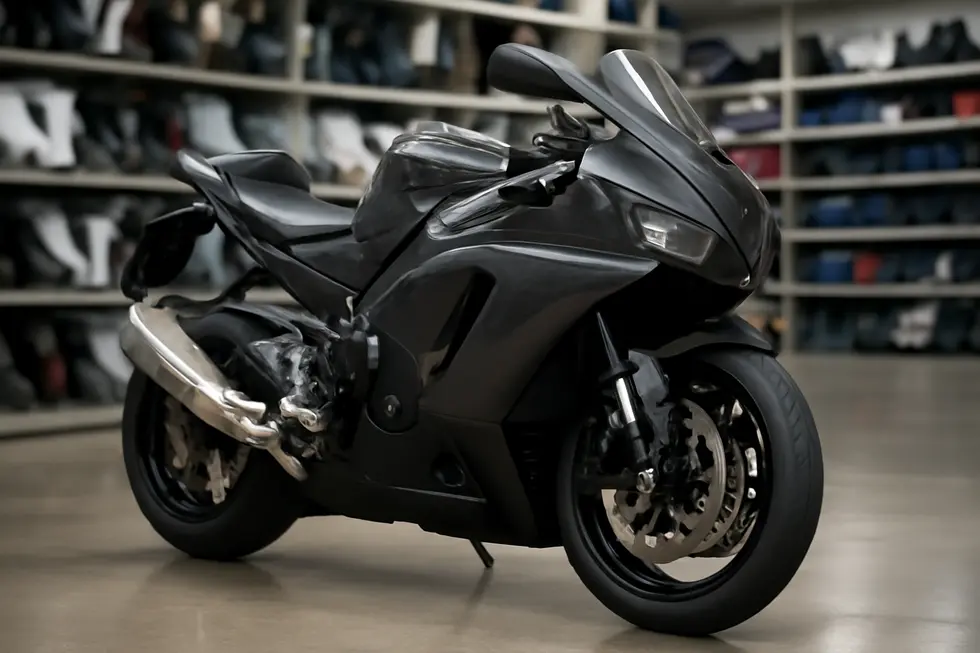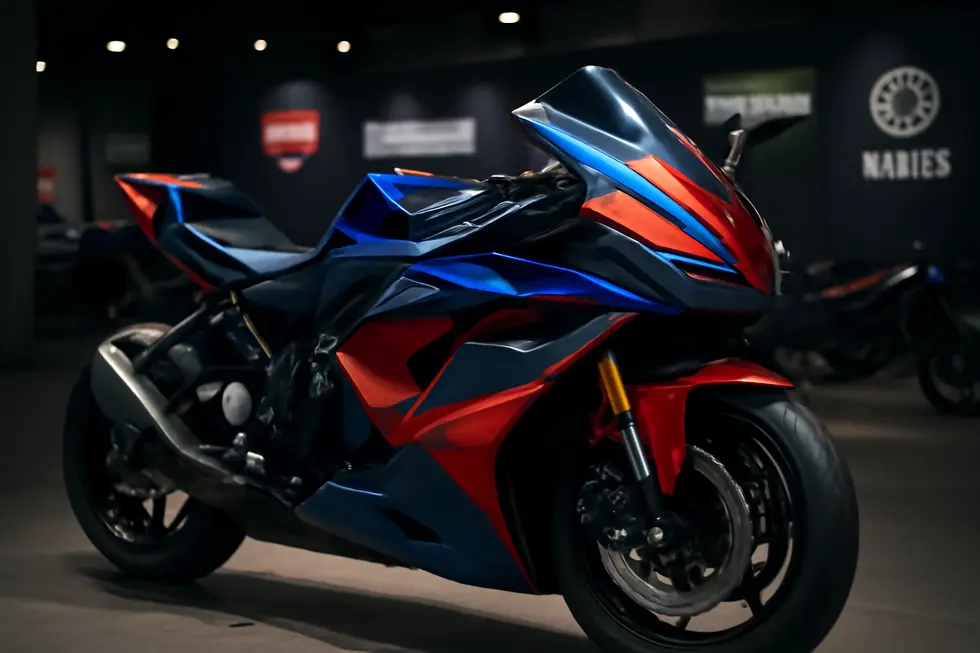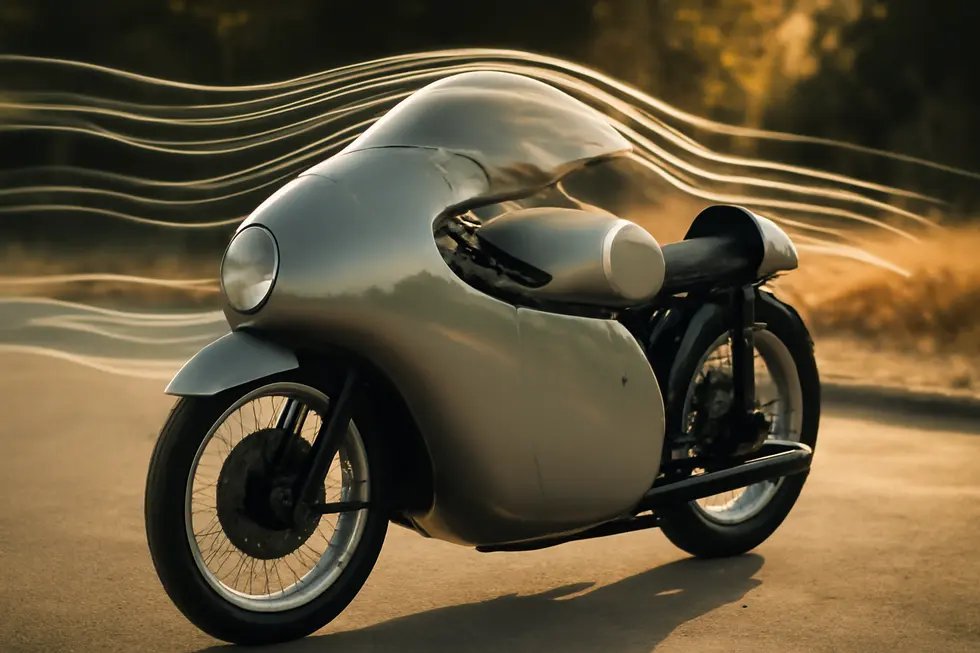Mastering Custom Motorcycle Fairing Fabrication: From Design to Market
September 15, 2025 | by summitfairings
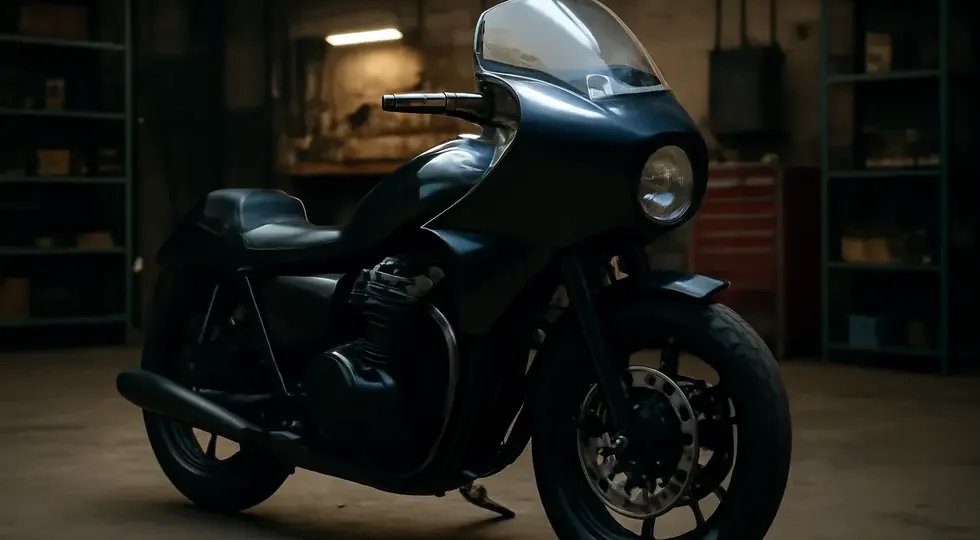
Introduction
Custom motorcycle fairing fabrication represents a niche yet growing segment within the motorcycle aftermarket industry, combining engineering precision with aesthetic innovation. For business owners, understanding the complexities of design, material selection, manufacturing, and customization is crucial to delivering products that meet rider expectations and market demands. This article explores foundational aspects of fabrication, beginning with design principles and material choices that affect durability and style. It then delves into manufacturing techniques and mounting strategies critical for ensuring fitment and functionality. Finally, it reviews customization options and current market offerings from leading companies, highlighting opportunities for differentiation and customer engagement. Each chapter builds on the last to offer a holistic insight into the business potential and technical considerations involved in custom motorcycle fairing fabrication.
Tables of Contents
Chapter 1: Design and Material Selection in Custom Motorcycle Fairing Fabrication
- Advancing Fairing Fabrication: Cutting-Edge Design Tools and Material Innovations
- Balancing Cost and Performance: Economic Impact on Fairing Design and Materials
- Geopolitical Dynamics Shaping Material Sourcing and Design Decisions in Custom Motorcycle Fairings
- Cultural Expression and Emerging Aesthetic Trends Driving Fairing Design and Materials
Chapter 2: Manufacturing Processes and Mounting Techniques in Custom Motorcycle Fairing Fabrication
- Precision CNC Machining and Strategic Material Choices Elevating Custom Fairing Fabrication
- Precision Finishing and Mounting: The Art of Painting and Installing Custom Motorcycle Fairings
- Precision Mounting Adaptations: Tailoring Fairing Installation to Specific Motorcycle Models
- Balancing Craftsmanship and Precision: Traditional Fabrication with CNC Alignment for Custom Motorcycle Fairings
Chapter 3: Customization Options and Market Offerings in Custom Motorcycle Fairing Fabrication
- Innovative Materials and Tailored Designs Shaping Custom Motorcycle Fairings
- Ensuring Perfect Fit: Navigating Fitment and Compatibility in Custom Motorcycle Fairings
- Enhancing Functionality and Style: Accessory Integration in Custom Motorcycle Fairing Fabrication
- Global Fabrication Networks and Material Innovations Driving Motorcycle Fairing Customization
Chapter 1: Design and Material Selection in Custom Motorcycle Fairing Fabrication
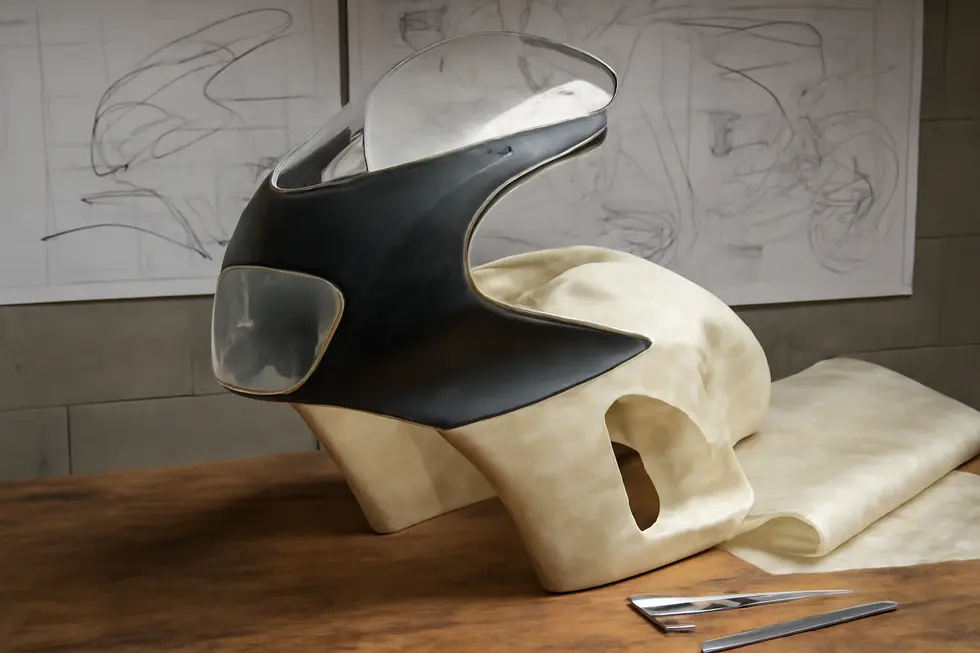
1. Advancing Fairing Fabrication: Cutting-Edge Design Tools and Material Innovations
Modern custom motorcycle fairing fabrication harnesses breakthroughs in digital design and material science to elevate both form and function. The adoption of additive manufacturing, commonly known as 3D printing, revolutionizes prototyping by enabling complex geometries that traditional methods struggle to achieve. This technology permits lightweight yet structurally sound components, often leveraging carbon fiber composites that provide an exceptional strength-to-weight ratio. Alongside 3D printing, multi-axis CNC machining affords remarkable precision in shaping durable ABS plastics and lightweight metals like aluminum and titanium to meet rigorous fitment demands. These machining techniques support tight tolerances vital for seamless integration with a motorcycle’s unique frame and front end.
In material considerations, ABS plastic remains a staple due to its resilience against heat, vibration, and impact, often enhanced with professional paint finishes that guard against UV degradation and maintain vibrant aesthetics. At the high-performance end, carbon fiber’s growing use reflects a balance of advanced material science and rider expectations for lightweight, strong, and visually striking fairings. Other polymers, including polypropylene and polycarbonate, add versatility across various component needs, while metals contribute essential strength to critical mounting hardware.
Digital design tools, including sophisticated CAD/CAM software, empower fabricators to tailor fairings from faithful OEM replicas to radically unique custom shapes. These tools streamline the iteration process and align ergonomic and aerodynamic improvements precisely with rider preferences. Complementing fabrication, custom painting methods—such as multi-layered airbrushing—deliver durability while transforming fairings into personalized art pieces.
This fusion of digital design, versatile materials, and advanced manufacturing techniques marks a significant leap forward in custom motorcycle fairing creation. Detailed insights into additive manufacturing’s influence on motorcycle parts can be found at Voxelmatters’ automotive and motorcycles category. For further exploration of custom fairing options and fabrication approaches, visit the Summit Fairings blog.
2. Balancing Cost and Performance: Economic Impact on Fairing Design and Materials
Economic considerations critically shape decisions in custom motorcycle fairing fabrication, weaving together cost constraints, performance demands, and manufacturing realities. At the heart of material selection lies a trade-off between expense and function. High-end options like carbon fiber offer unmatched strength-to-weight ratios and durability, contributing to superior aerodynamic efficiency and longevity. However, this comes at a premium cost, often ranging from hundreds to thousands of dollars per fairing set, making it less feasible for many custom projects.
Alternatives such as fiberglass and ABS plastic present more affordable paths, substantially lowering initial expenses while still delivering acceptable durability and finish quality. These materials, while heavier or slightly less resistant to wear, allow customization options with fewer financial barriers. The choice often depends not only on material cost but on the intended use of the motorcycle, whether for performance riding, frequent use, or show aesthetics.
Manufacturing processes also influence economic viability. Traditional hand layup and molding methods, though labor-intensive, grant flexibility for bespoke designs but can elevate labor costs. Emerging automated techniques like CNC machining and resin infusion promise more consistent quality and reduced production time, hinting at greater cost efficiency, though these are not yet widely adopted in small-batch custom fabrication.
Customization inherently increases per-unit costs due to lower volumes and the level of manual work required to achieve unique shapes or finishes. Conversely, mass-produced fairings benefit from economies of scale but limit personal design freedom. Thus, fabricators and riders must carefully balance their priorities between originality, budget, and production complexity.
Durability considerations further impact long-term economic decisions. Investing upfront in higher-quality materials may reduce maintenance and replacement expenses over time. Additionally, aesthetic treatments like UV-resistant coatings can add to initial costs but preserve visual appeal and material integrity.
These factors combine to make economic planning an essential part of custom fairing projects, where the goal is to harmonize budget with design ambition and functional performance. For riders and fabricators looking to explore cost-effective options without compromising style, discovering affordable motorcycle fairings at Summit Fairings offers valuable resources and insights.
External reference: Cost data on carbon fiber fairings and manufacturing processes.
3. Geopolitical Dynamics Shaping Material Sourcing and Design Decisions in Custom Motorcycle Fairings
Geopolitical Dynamics Shaping Material Sourcing and Design Decisions in Custom Motorcycle Fairings
The intricate process of material selection in custom motorcycle fairing fabrication is deeply influenced by geopolitical factors that govern supply chains and raw material availability. Global trade policies and shifting international relations can abruptly alter sourcing strategies, compelling fabricators to adapt their design and procurement decisions accordingly. For instance, manufacturing hubs such as China leverage government-backed infrastructure and abundant raw materials to offer cost-effective production. Yet, trade tensions and tariffs, particularly from the U.S. and EU, create unpredictable cost fluctuations and delivery delays, which challenge fabricators relying solely on these sources.
To mitigate risks, many custom fabricators diversify their suppliers across regions. Neighboring countries like Mexico benefit from strategic trade agreements enabling smoother cross-border supply, often influencing material choices due to favorable logistics and pricing. Meanwhile, emerging markets with political and economic instability, such as in parts of South Asia, present risks that can disrupt production workflows or limit access to critical components, prompting fabricators to favor more stable regions.
Such geopolitical complexities encourage manufacturers to seek materials that ensure supply chain resilience without compromising quality or design integrity. This often means balancing the preference for widely used materials like ABS plastic and fiberglass against considerations such as local manufacturing incentives, tariff landscapes, and import restrictions. Fabricators must also negotiate flexible supply contracts that accommodate unpredictable geopolitical shifts, adjusting designs to available materials or alternate suppliers as needed.
Ultimately, understanding the geopolitical environment is crucial for making informed material and design choices, ensuring custom fairings remain both aesthetically distinctive and functionally reliable. This strategic approach aligns directly with broader considerations on economic impacts in fabrication, allowing builders to anticipate challenges and maintain consistent quality standards.
For readers interested in a deeper understanding of the geopolitical impact on motorcycle parts manufacturing and supply chains, further analysis is available from Coherent Market Insights.
4. Cultural Expression and Emerging Aesthetic Trends Driving Fairing Design and Materials
Custom motorcycle fairing fabrication weaves cultural identity and evolving rider preferences into both design and material choices. These fairings transcend pure functionality, acting as bold statements of personal and community expression that resonate within subcultures or regional traditions. For example, riders inspired by classic British motorcycles or surf culture integrate stylistic cues into their fairings, reinforcing shared values and pride among enthusiasts.
At the core of this creative process lies craftsmanship, where innovation in materials like high-impact ABS plastic and carbon fiber enhances durability while allowing intricate, custom forms. These materials cater to sustainability by extending longevity, offering strength without excessive weight. The growing preference for carbon fiber signals a shift toward modern, performance-oriented aesthetics, blending technological advances such as CNC milling and 3D design with artisanal detailing.
Visually, fairings increasingly balance retro and contemporary influences: designs incorporate acid-etched metals, pearl-coated paints, and integrated LED lighting to create layers of depth and distinctive character. This fusion enriches the motorcycle’s story, aligning its appearance with the rider’s identity and narrative.
Beyond looks, these design trends prioritize function—improving aerodynamics, weight reduction, and rider comfort with subtly integrated features like compact lighting and relocated controls that maintain streamlined profiles. This holistic approach demonstrates how material selection underpins both the aesthetic and technical aspects of modern fabrication.
The cultural impact of these choices fosters a growing awareness of sustainability and heritage within motorcycle communities, where craftsmanship and innovation unite. Explorations of these themes and material options can be further uncovered in resources like the insights shared on summitfairings.com.
This intersection of cultural expression, advanced materials, and design innovation shapes the evolving landscape of custom motorcycle fairing fabrication worldwide.
Chapter 2: Manufacturing Processes and Mounting Techniques in Custom Motorcycle Fairing Fabrication
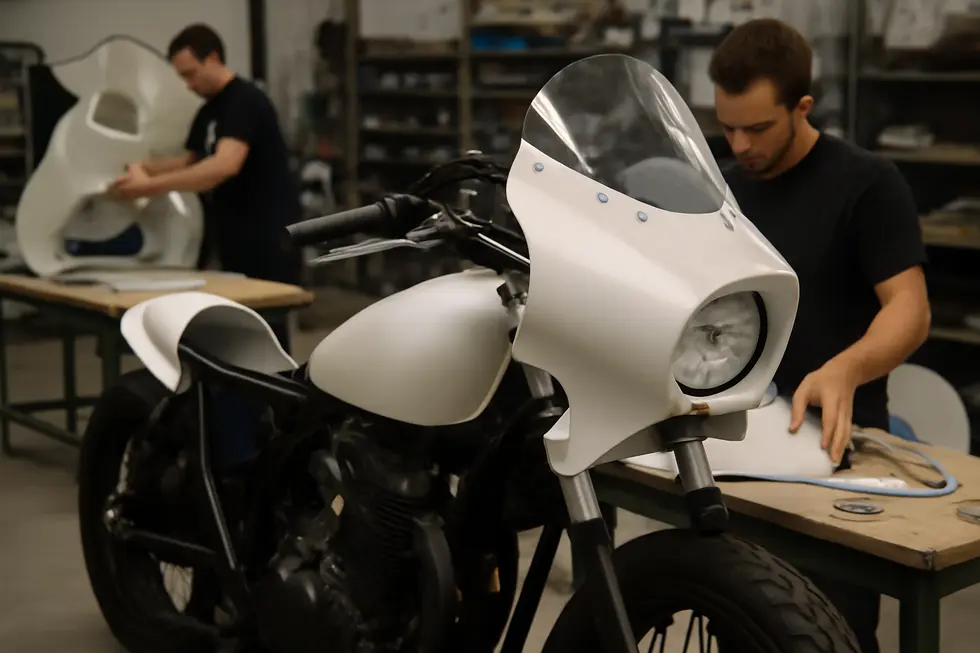
1. Precision CNC Machining and Strategic Material Choices Elevating Custom Fairing Fabrication
The integration of advanced CNC machining techniques with carefully selected materials defines the cutting edge of custom motorcycle fairing fabrication. Utilizing 5-axis CNC milling and turning, manufacturers achieve exceptional accuracy with tolerances as tight as ±0.001mm. This precision is essential not only for complex fairing contours but also for mounting brackets that must align flawlessly with motorcycle frames and triple trees. The smooth surface finishes attained through CNC machining—often reaching a roughness average (Ra) below 0.8—ensure that both aesthetic appeal and aerodynamic function are uncompromised.
Material selection is equally critical in balancing performance and durability. Plastics like ABS and polycarbonate offer riders lightweight, impact-resistant fairings that resist weathering and maintain finish integrity. For the structural elements such as mounting brackets, metals like aluminum and titanium provide a superior strength-to-weight ratio, corrosion resistance, and fatigue durability required by the stresses of riding and vibration. Stainless steel often complements these choices where extra rigidity and corrosion protection are needed without significant weight gain.
Mounting solutions capitalize on this precision and material diversity. CNC-machined brackets tailor connection points to exact frame dimensions, preserving stability and alignment. Bolt-on mounts with integrated threaded inserts simplify installation and future adjustments, supporting frequent customization or maintenance. Adjustable mounting arms allow riders to fine-tune windshield height and angle, a feature that often involves slight modifications to the motorcycle’s triple tree hardware to accommodate optimal positioning.
Custom fairing fabrication benefits greatly from the repeatability CNC machining provides, enabling consistent quality in low-volume production or one-off designs. This synergy of exacting machining processes with judicious material choices underpins the functional, durable, and visually striking fairings that elevate rider experience and motorcycle personalization.
For further insight into precision machining techniques in motorcycle fabrication, explore detailed explanations at GreatLight’s precision machining services.
Discover more on how craftsmanship meets technology at Summit Fairings blog.
2. Precision Finishing and Mounting: The Art of Painting and Installing Custom Motorcycle Fairings
Precision Finishing and Mounting: The Art of Painting and Installing Custom Motorcycle Fairings
Custom motorcycle fairing fabrication demands meticulous finishing and mounting processes to achieve both aesthetic excellence and functional integrity. The finishing phase begins with thorough surface preparation, which varies depending on the material. For metal components like stainless steel, a multi-stage treatment is essential—initial bead blasting creates a uniform texture, followed by chemical pickling to remove contaminants, and passivation to restore resistance to corrosion. This rigorous preparation ensures coatings adhere firmly and stand up to the rigors of road use. Conversely, plastic components such as ABS require careful sanding with fine-grit sandpaper to roughen surfaces, enhancing primer and paint adhesion without compromising the shell’s integrity.
Following preparation, priming and painting involve specialized coatings tailored to material properties. Metals often receive powder coating or wet painting with durable finishes, while plastics necessitate flexible primers and multiple paint layers, sometimes enhanced by custom airbrushing or graphics to match rider styles and motorcycle themes. Curing between coats guarantees long-lasting adhesion and a smooth, visually pleasing surface.
Mounting the fairing is equally critical, relying on precision fabrication of custom brackets, fasteners, and vibration-absorbing hardware. Materials like fiberglass or polypropylene are shaped and fitted through CNC machining or skilled handwork to conform exactly to the motorcycle’s frame geometry. This fitting often requires iterative testing and minor adjustments including drilling or trimming to balance alignment, rider ergonomics, and aerodynamic function. Rubber grommets and engineered mounts ensure stability and reduce stress on both the fairing and the bike during operation.
The symbiotic relationship between multi-step finishing and precise mounting culminates in a fairing that not only elevates the motorcycle’s appearance but also its durability and rider comfort. This integrated process exemplifies craftsmanship that embraces advanced techniques alongside tailored mechanical solutions.
Explore further insights on products and installation nuances at Explore the Best Motorcycle Fairings at Summit Fairings.
For detailed industry standards on stainless steel finishing, refer to ASTM A380/A380M.
3. Precision Mounting Adaptations: Tailoring Fairing Installation to Specific Motorcycle Models
Achieving a seamless and secure fit in custom motorcycle fairing fabrication depends heavily on model-specific mounting adaptations. Each motorcycle frame presents unique structural configurations, requiring carefully designed brackets, bolt holes, and attachment points that align precisely with OEM dimensions. This precise tailoring prevents interference with essential components such as steering mechanisms, suspension parts, and control cables, ensuring both functionality and safety.
During the manufacturing process, fairing kits often include pre-drilled holes matched to specific bike models, yet installers typically leave brackets loosely fastened initially. This intentional flexibility allows fine adjustments to accommodate slight variances in individual frames or aftermarket modifications. Washers and rubber grommets are incorporated at fastening points to distribute stress, absorbing vibrations and reducing the risk of cracking or material fatigue over time. In some cases, additional reinforcements like backing plates or pop rivets provide extra stability, preventing loosening during the rigors of road use.
Installation routinely involves careful repositioning of electrical components to clear mounting hardware, demonstrating the importance of a comprehensive approach that integrates mechanical and electrical systems. Tools such as hex keys, screwdrivers, wrenches, and drills are standard, particularly if the mounting system demands new hole drilling for a perfect fit. Rivets may be used for permanent joins where bolt access is limited.
This combination of engineering precision in manufacturing with practical installation adaptability ensures that custom fairings not only enhance aerodynamic performance and rider protection but also maintain durability and ease of maintenance. Emphasizing model-specific fitment and thoughtful mounting design elevates the quality and longevity of the finished assembly. For those interested in exploring a wide range of compatible and customizable fairings, discover affordable motorcycle fairings offers valuable insights into tailored options.
Source: Installation process details – Ride or Die YouTube video
4. Balancing Craftsmanship and Precision: Traditional Fabrication with CNC Alignment for Custom Motorcycle Fairings
Custom motorcycle fairing fabrication embodies a delicate balance between skilled manual craftsmanship and modern machining precision. Traditional fabrication techniques such as hand-cutting, bending, and welding remain essential for shaping and assembling metal or plastic components to achieve tailored fit and style. However, precision alignment—crucial for ensuring the fairing integrates seamlessly with a motorcycle’s frame—often relies on advanced CNC machining processes.
CNC machining allows fabricators to produce brackets, mounts, and structural parts with extremely tight tolerances, often as precise as ±0.001mm. These components, typically made from aluminum, stainless steel, or engineering plastics like nylon and ABS, undergo finishing processes such as anodizing, powder coating, painting, or polishing. This combination guarantees both durability against vibration and heat, and an appealing aesthetic that complements the motorcycle’s design.
The fusion of hand fabrication and CNC-machined parts is especially important when mounting the fairing. Custom brackets are often CNC-cut to exact dimensions, then hand-fitted and welded onto the motorcycle’s frame to maintain proper geometry. Mounting hardware such as lock nuts, plates, and bolts facilitate fine adjustments, ensuring the fairing sits flush, aligns perfectly with existing frame points, and resists vibrations encountered during riding.
Material choice and finishing treatments are selected not only for their strength but to withstand the rigor of road conditions while enhancing visual appeal. This hybrid approach of precision and hand craftsmanship is vital for prototype builds and low-volume custom fairings, delivering both functional performance and refined aesthetics.
For those interested in detailed CNC methods and mounting innovations in custom motorcycle parts, further insights can be found at glcncmachining.com.
Explore more about achieving impeccable fit and finish in custom fairings at Summit Fairings blog.
Chapter 3: Customization Options and Market Offerings in Custom Motorcycle Fairing Fabrication
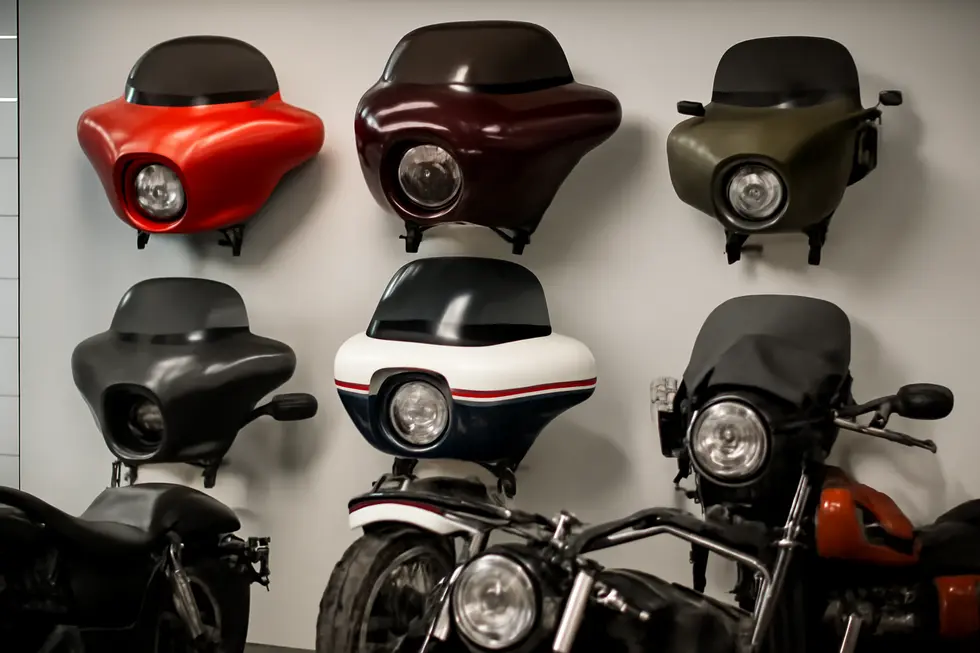
1. Innovative Materials and Tailored Designs Shaping Custom Motorcycle Fairings
Custom motorcycle fairing fabrication thrives on the synergy between advanced materials and versatile design customization to meet both aesthetic desires and functional demands. Central to this process is the extensive use of high-impact ABS plastic, prized for its lightweight yet durable nature, alongside heat and weather resistance—qualities essential for demanding riding conditions. While ABS dominates, other polymers such as polypropylene, polycarbonate, and nylon find their place in specialized components or prototypes where unique performance properties are required. Metals like stainless steel, aluminum, and titanium, often crafted with CNC machining, complement these plastics by providing robust mounting brackets or accent pieces that marry strength with precision.
Design flexibility allows fabricators to replicate OEM fit and styling faithfully, ensuring seamless integration with a rider’s existing motorcycle model. Alternatively, highly personalized graphics and paint schemes enable riders to express their individuality through UV-resistant finishes and high-gloss clear coats that maintain vibrancy over time. Among the most innovative design features are adjustable windshields and mounting arms, particularly common in custom setups for certain motorcycle brands, which enhance comfort by accommodating various front end geometries and rider preferences.
The use of CNC machining and prototype development techniques enables the realization of intricate shapes and tailored fairing profiles with tight tolerances, creating low-volume production runs or one-off designs that align precisely with unique build specifications. This meticulous approach results in custom fairings that balance durability, style, and rider ergonomics.
For riders seeking comprehensive customization options, resources such as the Summit Fairings blog offer valuable insights and product ranges that support both OEM-style replication and fully bespoke creations.
Together, these material choices and design innovations underscore the evolving landscape of custom motorcycle fairing fabrication, where individual rider vision meets cutting-edge manufacturing for superior form and function.
2. Ensuring Perfect Fit: Navigating Fitment and Compatibility in Custom Motorcycle Fairings
Achieving perfect fitment and compatibility stands at the core of custom motorcycle fairing fabrication, where each piece must harmonize flawlessly with the bike’s frame, mounting points, and functional aspects. The market caters to this demand through a spectrum of solutions, ranging from model-specific aftermarket parts to fully bespoke fabrications crafted for unique builds. Model-specific fairings are precision-engineered to match the OEM mounting configurations, preserving factory ergonomics and streamlining installation. For popular motorcycles such as the Yamaha FZ series and various Harley-Davidson models, suppliers provide fairings available in painted or raw finishes that cater to both aesthetic tastes and mechanical standards.
In contrast, workshops offering custom fabrication work closely with builders, adapting or creating components that reflect an individualized vision while addressing structural integrity and precise fit. Such projects often involve iterative trial fitting, custom bracket design, and the use of advanced materials to balance durability, weight, and visual appeal. This hands-on fabrication approach is essential when integrating fairings on vintage or extensively modified motorcycles, where OEM alignments may no longer apply.
Aftermarket providers also focus on performance upgrades alongside stylistic authenticity. Their products undergo rigorous fitment testing to assure reliability across various Triumph and other motorcycles, facilitating both do-it-yourself and professional customization endeavors. Material choices vary widely—from ABS plastic and fiberglass to carbon fiber composites—enabling riders to prioritize cost, weight, or durability, depending on their needs.
Today’s supply chains blend local manufacturers and global platforms, offering broad accessibility to a diverse range of fairing solutions. This widespread availability supports riders seeking either ready-made kits or adaptable components tailored to very specific builds. For enthusiasts looking to explore more about the diverse fairing selections and customization opportunities, discover affordable motorcycle fairings at Summit Fairings provides an excellent resource.
Comprehensive offerings in fitment and compatibility elevate the custom fairing market, ensuring that style, comfort, and performance unite harmoniously on every bespoke motorcycle.
For further insight into precision custom fabrication, see the detailed case of a classic café racer project merging aesthetics and fitment on a vintage BMW: https://www.bikeexif.com/bmw-r-12-cafe-racer
3. Enhancing Functionality and Style: Accessory Integration in Custom Motorcycle Fairing Fabrication
Custom motorcycle fairing fabrication extends beyond molding panels to include the thoughtful integration of complementary components and accessories that elevate both performance and rider experience. Essential elements such as windshields come in varying sizes, tints, and materials—ranging from clear to smoked or black—to provide tailored wind protection and visual appeal. Many custom fairing designs feature adjustable windshield arms, enabling riders to fine-tune airflow control for optimal comfort during rides.
Instrument mounts and panels also play a significant role in customization. Advances in fabrication techniques like 3D printing allow the creation of bespoke cockpit mounts that accommodate aftermarket dials, LED displays, and organized cable management, ensuring functionality blends seamlessly with a clean, streamlined aesthetic. These mounts often enhance vintage or cafe racer styles by preserving the bike’s character while modernizing usability.
Mounting hardware forms the backbone of secure fitment. While some custom fairing kits include universal brackets, specific models require custom bracket fabrication or modification to fit unique triple trees or front-end assemblies properly. This adaptability is crucial for accommodating diverse bike configurations and desired fairing positions, ensuring stability without compromising design integrity.
Material and finish selections further personalize fairings, with options ranging from durable ABS plastic to lightweight carbon fiber featuring matte, glossy, or twill weave finishes. Riders can also commission custom paintwork and graphics, enhanced by UV-resistant coatings that preserve vibrant designs over time.
The convergence of these accessories, adjustable features, and tailored fabrication enables riders to create fairing setups that perfectly reflect their style and functional needs. For those seeking a wider range of options and detailed insights, exploring specialized fairing providers offers valuable guidance and solutions tailored to individualized builds. More details are available at Explore the Best Motorcycle Fairings at Summit Fairings.
Reference: [1] TMF Cycles—advanced windshields and mounting innovation.
4. Global Fabrication Networks and Material Innovations Driving Motorcycle Fairing Customization
The custom motorcycle fairing fabrication industry thrives on a vibrant ecosystem defined by material variety, advanced manufacturing, and expansive global supply chains. Fabricators employ an array of materials—from lightweight carbon fiber composites and durable ABS plastics to high-strength metals like aluminum and titanium—to achieve the ideal blend of performance, aesthetics, and rider comfort. Advanced CNC machining and composite layup techniques enable precise shaping and finishing of components, allowing both bespoke one-off creations and low-volume productions that meet exacting tolerances and quality standards.
Strategically located manufacturing hubs contribute significantly to this diversity. Southeast Asia, especially Thailand, stands out as a key source of carbon fiber composites, leveraging its automotive expertise, supportive infrastructure, and efficient shipping routes. This regional specialization not only supplies global OEMs but also serves custom fabricators seeking competitive costs without sacrificing quality. Conversely, North American and European facilities emphasize rapid prototyping and customization, responding to rider feedback and market trends with agility and precision.
Customization reaches beyond materials, supported by manufacturers who offer globally accessible services. Companies provide tailored fairing kits for various motorcycle models, delivering worldwide and empowering riders to transform their bikes with unique styles and configurations. This accessibility underscores how technological advances and digitized order systems harmonize to make custom fabrication a practical option for enthusiasts worldwide.
Cutting-edge manufacturing technologies such as 5-axis CNC milling and sophisticated composite prepregs further elevate product quality and design complexity. These innovations streamline the journey from concept to finished fairing, fostering vibrant market offerings that cater to diverse tastes and performance needs.
This interconnected global landscape demonstrates the compelling synergy between material science, fabrication technology, and market accessibility, fueling the expansive range of custom motorcycle fairings available today. For deeper insight into precision CNC machining services that enable such craftsmanship, see GLC CNC Machining.
Explore more about custom motorbike fairings on the Summit Fairings blog.
Final thoughts
Custom motorcycle fairing fabrication is a specialized field that demands a synthesis of design expertise, precise manufacturing processes, and comprehensive customization options to meet diverse rider needs. For business owners, mastering these elements lays the foundation for competitive product offerings that balance functionality, style, and user experience. From meticulous material selection through to sophisticated mounting techniques, every stage impacts the final product quality and customer satisfaction. Understanding the market landscape and leveraging customization capabilities position businesses to capitalize on evolving consumer preferences. Ultimately, a well-crafted fairing not only enhances motorcycle performance and aesthetics but also establishes a brand’s reputation in a competitive industry niche.
Ready to elevate your ride? Summit Fairings delivers premium, custom-fit fairings that blend style and durability. Whether you’re chasing speed or turning heads, we’ve got your bike covered. Don’t wait—transform your machine today. Click, customize, and ride with confidence. Your perfect fairing is just a few clicks away. Act now!
About us
undefined
RELATED POSTS
View all

